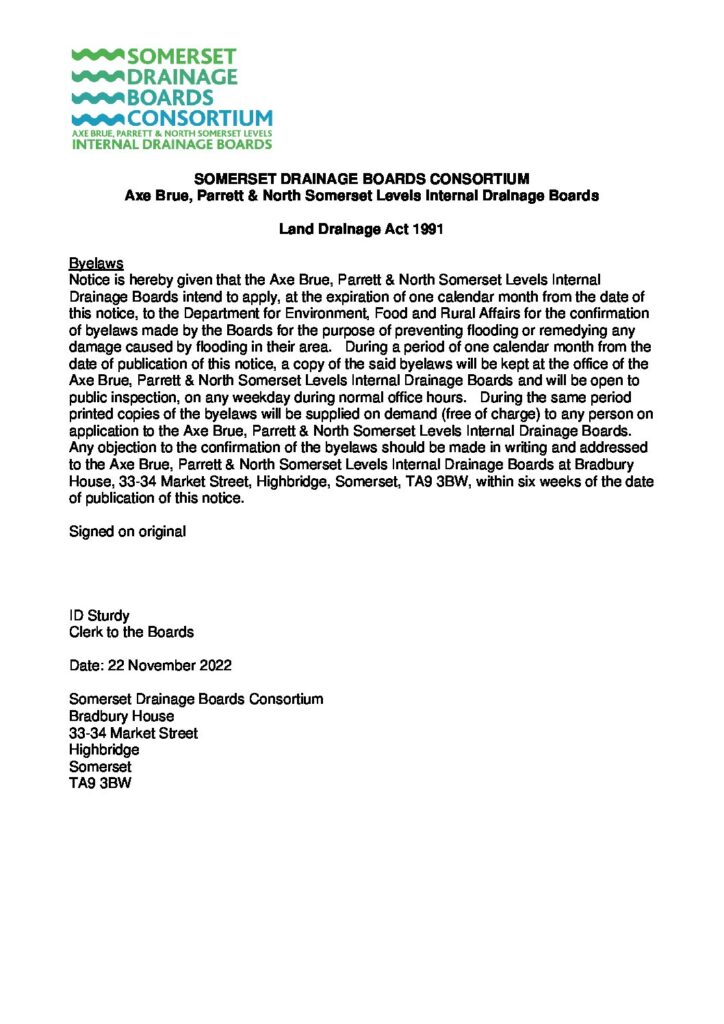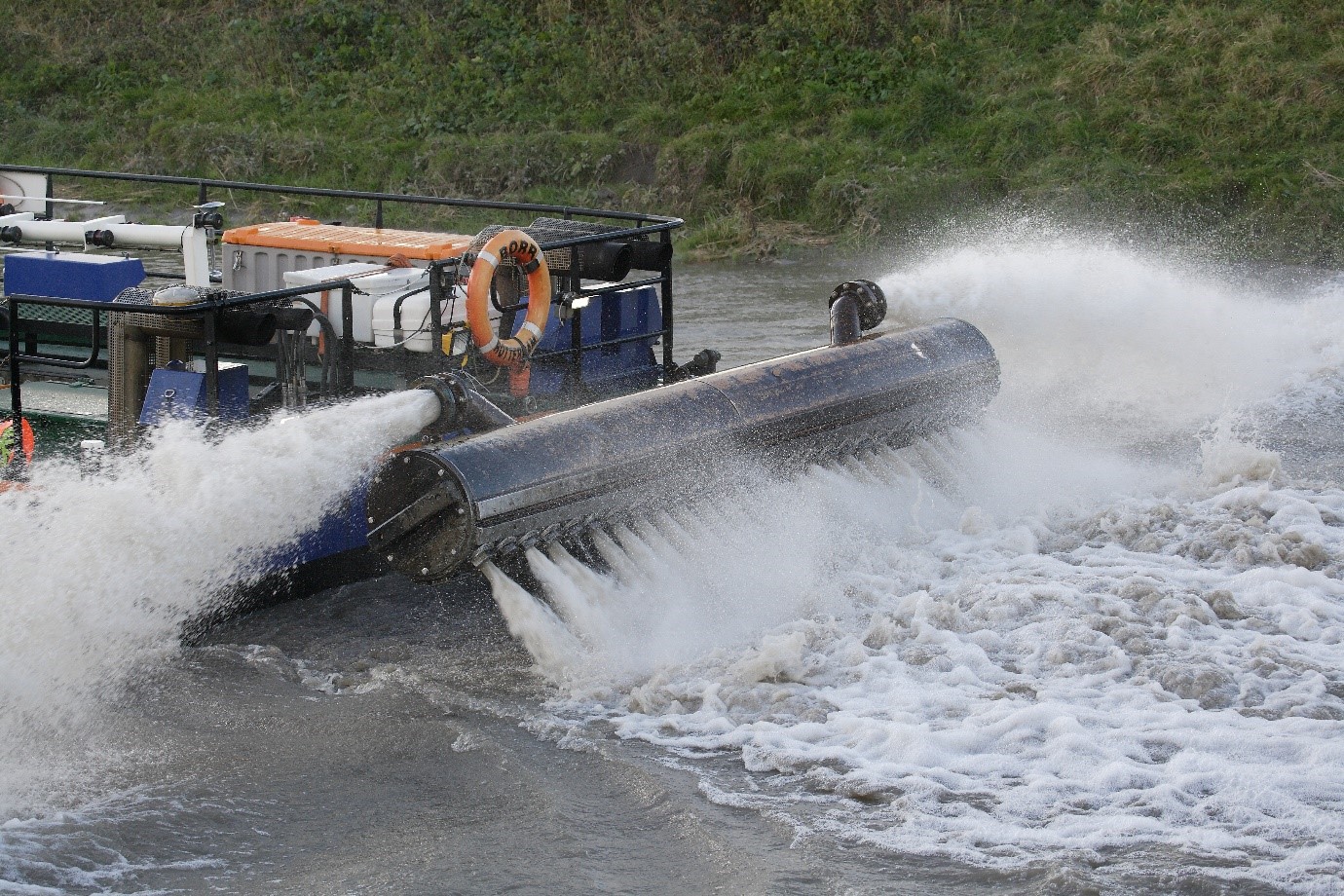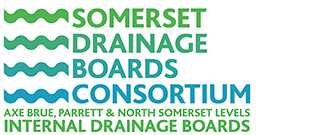The Axe Brue, North Somerset Levels and Parrett Internal Drainage Boards have all adopted an amended set of byelaws. The changes proposed are minor and will help to clarify some uncertainty that may have existed within Byelaws 2(b), 3 and 10 in the 2012 version of the Land Drainage Byelaws. The following Notice states that a one month consultation period will take place where members of the public may comment on the proposed new byelaws before we submit them to the Minister at Defra for approval.

Elections
Register of Electors – Axe Brue
Register of Electors – Parrett
Water Injection Dredging
Another Water Injection Dredging (WID) campaign was carried out on the Parrett in January. Water Injection Dredging uses a jet bar moved over the surface of the channel bed while large volumes of water are directed at low pressure into the sediment layer. The density of the sediment surface layer is lowered until it achieves fluid behaviour. The fluidized sediment layer is then transported horizontally in the lower part of the water column away from the dredged areas by river flow during outgoing tides. The fluidized sediment eventually enters lower estuary where it mixes with extremely high background turbidity conditions. General practice is to start dredging at the downstream extent of the site, which increases channel gradients and facilitate mobilisation and transportation of the fluidized sediment downstream.
Our Term Contractor, Van Oord used a new vessel this year specifically designed for dredging upper estuary systems like the River Parrett. In previous years, Water Injection Dredging was undertaken using a self-propelled vessel called the ‘Borr’ (above), which had an injector bar that was orientated towards the channel bed. In 2022 an alternative WID configuration of ‘Baldr’ and ‘Havik’ (below) has been deployed.

The Baldr has the same WID capacity as the Borr, but is propelled by a separate vessel called Havik. The Baldr can operate in shallower water and smaller channel cross sections, thereby greatly extending the potential for dredging under different tidal conditions. Furthermore, the injector bar angle of the Baldr can be adjusted allowing greater flexibility and precision in dredging, especially in the channel margins. Dredging over an 18-day period in Jan 2022, funded by Somerset Rivers Authority, removed around 20,000m3 of consolidated silt from a 4km reach of the river, increasing flow capacity and reducing flood risk.
ADA & CLA call for much more focus on managing our rivers
With our changing climate, and expanding built environment, we are seeing greater pressures being placed on our rivers and catchments. A growing demand for water and rising frequency of flooding in England, both threaten the environment, people and local economies. Carefully managing our rivers is a crucial part of the adaptations we need to meet these challenges and sustain the environment. Yet, under investment in the maintenance of many of our lowland rivers is reducing their capacity to convey the volumes of water needed.
Following an increasing frequency of flood events from our rivers in recent years, ADA and the CLA hosted an online “Keeping our Rivers Flowing” Summit on 24 June. Over 150 delegates discussed the reality of our river systems, the consequences of underinvestment in watercourse maintenance, and solutions for better managing our catchments from source to sea.
Senior Defra and Environment Agency officials were able to hear first-hand from local land managers and internal drainage boards about the increasing frustrations that our lowland rivers are becoming less able to deal with the flows of water to evacuate floods from food-producing land and peoples’ homes and businesses. Concerns were also voiced about the environmental consequences on the water quality of vegetation-choked rivers and their reduced capacity of being able to transfer water naturally from one area to another in times of drought.
The Summit also looked beyond the problems. Several speakers highlighted how a different strategic approach and working in local partnerships can help resolve tensions and enable better river management.
Commenting on the current situation, ADA’s Robert Caudwell, co-chairing the event said: “People are ready and willing to work together locally to find ways to help our rivers flow, but they feel restrained by a lack of government support on river maintenance. We need to spend more on maintenance to save money spent on flood response and recovery “.
Landowners are ready to play their part too. With the CLA’s recent publication of a key policy document “A Vision for Water to 2030”, their members reinforced their desire to play a part in improving the wider water environment through local solutions at comparatively low cost.
Judicaelle Hammond, the CLA’s Director of Policy and Advice and co-chair of the event added: “Landowners play an important role protecting downstream communities from flooding, often saving millions of pounds’ worth of damage, but this comes at the expense of their own land. It is critical that the Environment Agency works with the rural community to protect the local river environment and where they can’t, ensures the right body is in place to do so. In the meantime, CLA members are ready to start thinking outside the box, looking at how improving soil health can reduce flood risk, where locally-driven partnerships can work and investigating natural flood risk management projects.”
The Summit heard about the great potential for the further use of innovative, environmentally friendly river maintenance techniques, including those utilised in the Steeping Catchment Action Plan. There was a strong desire to bring water management to the fore in future consideration of the Environment Land Management Scheme (ELMS), and a recognition that soils management must play a crucial part in reducing silt and nutrient loads in our rivers.
As part of the next Spending Review, due in the autumn, Defra will be submitting proposals to HM Treasury on future investment needed for flood and coastal erosion risk management. We need to ensure our rivers and their associated flood and water management assets are effectively managed to keep them flowing, and ensure that local partnerships equitably collaborate in the work. ADA and the CLA will be calling on them to look more closely at investment in routine maintenance within the Environment Agency’s revenue budget.

